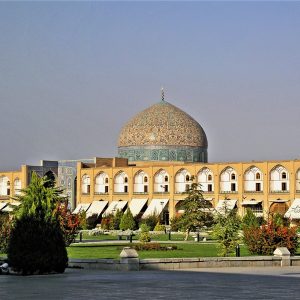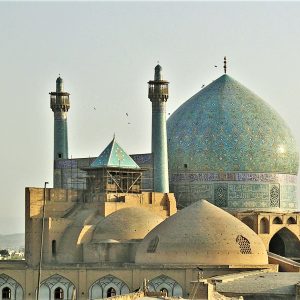Ziggurat at Chogha Zanbil, Iran
The ancient complex of Chogha Zanbil lies in the Khuzestan province of South west Iran. It is one of the few existing ziggurats outside Mesopotamia .Chogha Zanbil became the first Iranian site to be inscribed on the UNESCO World Heritage Site
It was built about 1250 BCE by the king Untash Naparisha mainly to honour the great god Ishnushinak. It was destroyed in 640 BCE By the Assyrian King Ashurbanipal.
The ziggurat originally measured 105.2 metres (345 ft) on each side and about 53 metres (174 ft) in height, in five levels, and was crowned with a temple. Mud brick was the basic material of the whole ensemble. The ziggurat was given a facing of baked bricks, a number of which have cuneiform characters giving the names of deities in the Elamite and Akkadian languages. Though the ziggurat now stands only 24.75 metres (81.2 ft) high, less than half its estimated original height, its state of preservation is unsurpassed.
The main building materials in Chogha Zanbil were mud bricks and occasionally baked bricks. The monuments were decorated with glazed baked bricks, gypsum and ornaments of faience and glass. Thousands of baked bricks bearing inscriptions with Elamite cuneiform characters were all inscribed by hand.
Prints : Available as Giclee print on finest quality paper or canvas. International shipment
Sizes available: 8 x 12″(203 x 305 mm); 12 x 16″(305 x 410mm); 18 x 24″(457 x 610 mm); 24 x 32″ (610 x 813mm)
For list of prices, details of paper or canvas and pigments used, please get in touch via contact form



